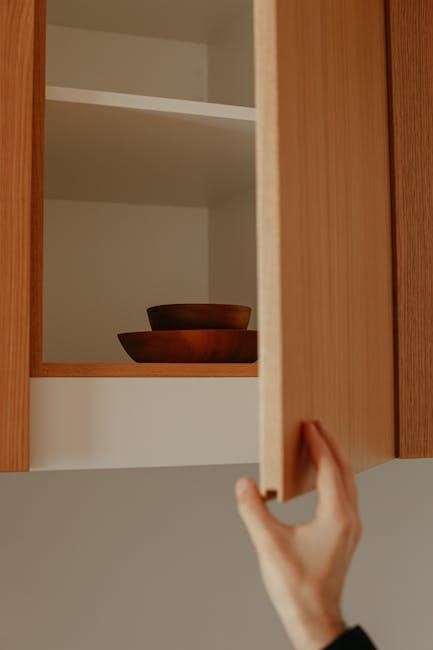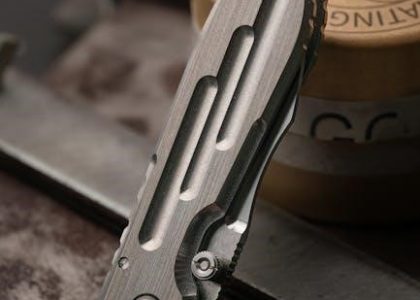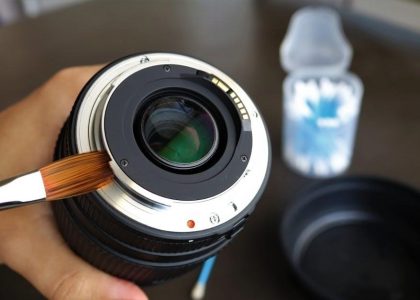Bitwig Studio Manual: A Comprehensive Guide
Welcome to the Bitwig Studio manual! This comprehensive guide will walk you through every aspect of the software, from basic concepts to advanced techniques. Whether you’re a beginner or an experienced user, this resource will help you unlock the full potential of Bitwig Studio.
Welcome to Bitwig Studio, a digital audio workstation (DAW) designed for modern music production, performance, and sound design. This section serves as your initial introduction to the program, offering an overview of its structure and fundamental concepts. Bitwig Studio distinguishes itself with its flexible workflow, modular architecture, and innovative features that cater to both beginners and experienced users.
This DAW provides a unique environment for composing, recording, arranging, mixing, and mastering your music. Its intuitive interface allows you to explore different musical ideas and create complex soundscapes. Whether you’re producing electronic music, recording live instruments, or experimenting with sound design, Bitwig Studio offers a comprehensive set of tools to bring your creative vision to life. Dive in and discover the possibilities!

Understanding the Bitwig Studio Interface
Navigating Bitwig Studio efficiently requires a solid grasp of its interface. This section will guide you through the main areas: Arranger View, Mixer View, and Browser Panel, enabling you to understand their functions and how they interact.
Arranger View
The Arranger View in Bitwig Studio is your central hub for sequencing and arranging musical ideas. It provides a timeline-based environment where you can create, edit, and manipulate clips, which are the building blocks of your songs. Tracks run horizontally, allowing you to organize different instrument parts, audio recordings, and automation data.
Within the Arranger View, you can easily drag and drop clips to arrange the structure of your song. Bitwig Studio’s flexible clip editing tools allow you to adjust the timing, pitch, and other parameters of your clips. Automation lanes provide a visual way to control device parameters over time, adding dynamic movement to your productions.
The Arranger View also offers powerful features for editing multiple tracks simultaneously, streamlining your workflow and speeding up the arrangement process. With its intuitive interface and comprehensive set of tools, the Arranger View empowers you to bring your musical visions to life.
Mixer View
The Mixer View in Bitwig Studio is where you shape and refine the sonic landscape of your projects. It provides a comprehensive overview of all your tracks, allowing you to adjust levels, apply effects, and create a polished final mix. Each track is represented by a channel strip, featuring essential controls such as volume faders, pan knobs, and send levels.
Within the Mixer View, you can insert devices like EQs, compressors, and reverbs to sculpt the sound of individual tracks. Bitwig Studio’s powerful routing capabilities allow you to create complex signal chains, sending audio from one track to another for creative effects processing. The Mixer View also offers metering tools to help you monitor levels and avoid clipping.
With its intuitive layout and extensive set of features, the Mixer View empowers you to achieve a professional-sounding mix in Bitwig Studio. Whether you’re working on a simple track or a complex arrangement, the Mixer View provides the control and flexibility you need to bring your sonic vision to life.
Browser Panel
The Browser Panel in Bitwig Studio is your central hub for accessing and managing all your sounds, devices, and project files. It’s designed to streamline your workflow, allowing you to quickly find the resources you need to fuel your creativity. The Browser Panel is organized into several sections, including a file browser, a device browser, and a clip browser.
The file browser lets you navigate your computer’s file system, preview audio files, and import them directly into your project. The device browser provides access to Bitwig Studio’s extensive library of instruments, effects, and utilities, as well as any third-party plugins you have installed. You can easily search for devices by name or category, and audition them in real-time.
The clip browser allows you to manage and organize your audio and MIDI clips. You can tag clips with keywords, create custom folders, and quickly find the perfect clip for your project. With its intuitive interface and powerful search capabilities, the Browser Panel makes it easy to stay organized and find inspiration in Bitwig Studio.

Key Concepts in Bitwig Studio
Understanding the core principles of Bitwig Studio is crucial for efficient music production. This section explores fundamental concepts like devices, modulation, and the Clip Launcher, which empower your creative workflow within the DAW.
Devices and Modules
Bitwig Studio’s architecture revolves around devices and modules. Devices are the building blocks of your sound, encompassing instruments, effects, and utilities. These can be loaded into tracks to create sound. Modules exist inside of some devices and are smaller components with individual parameters.
The Grid, a modular environment within Bitwig, heavily utilizes modules. Parameters within both devices and modules can be automated, mapped to MIDI controllers, or modulated using Bitwig’s extensive modulation system. Notably, Bitwig supports MPE note signals and also allows for CV signals for integration with external hardware.
The parameters of any module used are parameters of that device. Understanding how to load, manipulate, and chain devices and modules is key to sound design and music creation within Bitwig Studio. Devices are the parameters used for that effect.
Modulation System
Bitwig Studio features a powerful and flexible modulation system, allowing you to add movement and dynamism to your sounds. Modulation sources can be LFOs, envelopes, step sequencers, audio signals, or even external CV signals. These sources can then be mapped to nearly any parameter within Bitwig’s devices and modules.
This allows for complex and evolving sounds. The modulation system is deeply integrated throughout Bitwig, so you can modulate parameters of devices and modules. With the help of Bitwig’s modulators, a single note can trigger a cascade of changes.
The possibilities are endless. Experimentation with the modulation system can yield surprising results, and is a key aspect of Bitwig’s sound design capabilities. Moreover, MPE note signals are directly supported, further enhancing modulation possibilities. Modulation is an essential part of Bitwig’s workflow.
Clip Launcher
The Clip Launcher in Bitwig Studio provides a non-linear, intuitive way to experiment with musical ideas and arrangements. It’s a grid-based interface where you can store and trigger audio and MIDI clips. This allows you to create loops, scenes, and even entire songs in a flexible and improvisational manner.
Clips can be triggered individually or in groups (scenes), enabling you to quickly explore different combinations and arrangements. The Clip Launcher is ideal for live performance. You can launch clips and manipulate parameters in real-time, creating dynamic and engaging performances.
The Clip Launcher offers a fluid workflow. It facilitates spontaneous creation and allows for easy experimentation. Furthermore, it offers seamless integration with the Arranger View. This allows you to transition from the improvisational environment to the linear arrangement environment.
Working with Devices
This section delves into the heart of Bitwig Studio: Devices. Learn how to load, use, and manipulate these powerful tools to create unique sounds. Also, discover automation techniques and interactive help features within each device.
Loading and Using Devices
This section explores the fundamental process of loading and utilizing devices within Bitwig Studio. Whether you’re a novice or a seasoned producer, understanding how to effectively manage devices is crucial for realizing your creative vision. Devices are the building blocks of your sound, encompassing instruments, effects, and utilities.
To begin, we’ll cover the various methods for accessing and loading devices into your project. This includes browsing the device library, utilizing the search function, and understanding device categories. We’ll then delve into the anatomy of a typical device interface, exploring the different parameters and controls available.
Furthermore, we’ll examine how to connect devices together to create signal chains, allowing you to shape and manipulate your sound in complex and interesting ways. This involves understanding routing options, input/output configurations, and the use of containers for organizing your devices.
Finally, we’ll touch on the importance of experimenting with different devices and combinations to discover new and inspiring sounds. Bitwig Studio offers a vast array of devices, each with its unique sonic character and capabilities. Embrace the exploration and unleash your creativity!
Parameter Automation
Parameter automation in Bitwig Studio allows you to bring your music to life by creating dynamic changes to device settings over time. This technique is essential for adding movement, interest, and evolving textures to your tracks. With automation, you can control virtually any parameter of any device, from simple volume adjustments to complex filter sweeps and modulation effects.
Bitwig Studio offers several methods for automating parameters. The most common approach involves drawing automation curves directly onto the timeline within the Arranger View. You can also record automation in real-time by manipulating device controls while the transport is running. This method is particularly useful for capturing spontaneous and expressive performances.
Furthermore, Bitwig Studio provides powerful modulation capabilities that can be used to automate parameters in creative ways. LFOs, envelopes, and other modulators can be assigned to control device settings, allowing for intricate and rhythmic automation patterns.
Understanding the different automation modes, such as write, read, and latch, is crucial for achieving precise control over your parameters. Experiment with different automation techniques to discover new and exciting ways to shape your sound and add depth to your compositions.
Interactive Help within Devices
Bitwig Studio offers a unique and intuitive way to learn about each device through its built-in interactive help system. This feature provides immediate access to relevant information directly within the device interface, eliminating the need to constantly refer to a separate manual or online resources. By simply hovering your mouse over a specific parameter or control, a tooltip will appear, offering a brief explanation of its function.
For more detailed information, most devices include a dedicated help section that can be accessed via a button or menu option. This section provides a comprehensive overview of the device’s features, parameters, and usage tips. You’ll often find examples and illustrations to further clarify complex concepts.
The interactive help system is designed to be context-sensitive, meaning that the information displayed is tailored to the specific parameter or control you’re currently interacting with. This makes it incredibly easy to quickly understand the purpose of each element and how it contributes to the overall sound.
Whether you’re a beginner exploring the basics or an experienced user delving into advanced techniques, the interactive help system is an invaluable tool for mastering Bitwig Studio’s extensive device library.

Navigating the User Guide
This user guide is designed for easy navigation. Use the table of contents to browse sections or utilize the search function to find specific information quickly. Mastering navigation will enhance your learning experience.
Browsing Sections
The Bitwig Studio manual is structured into logical sections to guide you through the software’s features and functionalities. Each section covers a specific area of Bitwig Studio, such as the Arranger View, Mixer View, Devices, Modulation System, and more. To effectively browse these sections, start by familiarizing yourself with the table of contents.
The table of contents provides a clear overview of the manual’s organization, allowing you to quickly identify the sections that are relevant to your current learning goals. You can navigate sequentially through the sections, building your knowledge step by step, or jump directly to specific topics that interest you. Each section contains detailed explanations, accompanied by visual aids and practical examples, to help you understand the concepts and apply them to your music production workflow.
Pay attention to the headings and subheadings within each section, as they provide further structure and guide you through the content. By using the table of contents and headings effectively, you can efficiently browse the manual and find the information you need to master Bitwig Studio.
Searching for Information
When browsing the Bitwig Studio manual, you may need to find specific information quickly. The search function is your powerful ally in such situations. It allows you to instantly locate any term, phrase, or concept within the entire manual, saving you valuable time and effort.
To use the search function effectively, start by identifying the keywords or phrases that are most relevant to your query. Enter these terms into the search bar, and the manual will display a list of all occurrences of those terms, along with the context in which they appear. You can then review the search results and select the entries that are most relevant to your needs.
For more precise results, use quotation marks to search for exact phrases, or use Boolean operators like “AND,” “OR,” and “NOT” to refine your search criteria. The search function is an indispensable tool for quickly accessing the information you need and mastering Bitwig Studio’s vast capabilities.

New Features in Version 5.0
Bitwig Studio version 5.0 introduces a range of exciting new features and enhancements designed to empower your music production workflow. This update focuses on expanding creative possibilities, improving efficiency, and providing deeper control over your sound.
One of the key additions is the new collection of Note FX, which allows for dynamic and expressive manipulation of MIDI notes. These effects can be used to generate intricate rhythms, create evolving melodies, and add unique textures to your compositions. Furthermore, version 5.0 includes enhanced modulation capabilities, providing even more ways to connect and control parameters within your projects.
The updated user interface boasts improved visual clarity and workflow enhancements, making it easier to navigate complex projects and access essential tools. Finally, several new devices have been added to the Bitwig Studio library, expanding your sonic palette and providing fresh inspiration for your creative endeavors. These features combine to make version 5.0 a significant upgrade for all Bitwig Studio users.
Bitwig Studio vs. Ableton Live
Bitwig Studio and Ableton Live are both powerful DAWs favored by electronic music producers, but they offer distinct approaches. Ableton Live is renowned for its Session View, designed for improvisation and live performance, alongside its traditional Arrangement View for linear composition. Its extensive library of instruments and effects, along with a user-friendly interface, makes it accessible to both beginners and professionals.
Bitwig Studio, on the other hand, emphasizes modularity and customization. Its unique device nesting capabilities and the Grid environment allow for the creation of custom instruments and effects. Bitwig also boasts a more advanced modulation system, offering deeper control over parameters. While Ableton Live has a larger user base and a wider range of third-party plugins, Bitwig Studio stands out for its flexibility and innovative features, appealing to users who value deep customization and experimental sound design. Ultimately, the choice depends on individual workflow preferences and creative goals.





